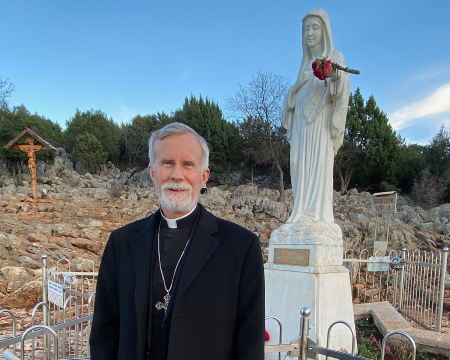We ask you, humbly: don't scroll away.
Hi readers, it seems you use Catholic Online a lot; that's great! It's a little awkward to ask, but we need your help. If you have already donated, we sincerely thank you. We're not salespeople, but we depend on donations averaging $14.76 and fewer than 1% of readers give. If you donate just $5.00, the price of your coffee, Catholic Online School could keep thriving. Thank you.Help Now >
'I imagined a zebra': Researchers close to Total Recall technology
FREE Catholic Classes
Scientists at Brown University teamed up with colleagues from Japan to implant false memories into their unsuspecting volunteers.
Highlights
CALIFORNIA NETWORK (https://www.youtube.com/c/californianetwork)
7/5/2016 (7 years ago)
Published in Technology
Keywords: False memories, Brown University, A-DecNef, brain, technique
LOS ANGELES, CA (Catholic Online) - According to Neuroscience News, researchers were able to force their test subjects to see things that weren't actually there.
The delusions were not mere hallucinations - they were implanted images carefully controlled by neuroscientists who provided specific associations between colors and lines.
Researchers targeted the V1 and V2 areas of the brain, which are involved in processing basic visuals the eyes perceive.
Prior to this experiment, no scientist has ever seen evidence of associative learning in the V1 or V2 sections.
Takeo Watanabe, the Fred M. Seed Professor of Cognitive and Linguistic Sciences at Brown and co-corresponding author of the paper, which was published in the science journal Current Biology, explained the study was "the first clear study that shows that V1 and V2 are capable of creating associative learning."
Watanabe's team gathered their group of volunteers and showed them images of different combinations of red, green and gray backgrounds behind vertical and horizontal stripes.
Each subject was connected to an magnetic resonance imaging (MRI) scanner that measured patterns of activity in the V1 and V2 areas as the subjects viewed the images.
This data was used to create a "classifier," which distinguishes the difference between red and green in the brain so volunteers could see specific colors - even if those colors were not present.
Researchers then embedded a small white disk with a gray background and vertical black stripes.
The volunteers were asked to imagine ways to make the disk larger and were told the bigger they could make the disk, the bigger their reward would be.
After three days of training, researchers realized those who saw the color red were able to enlarge the white disks, while those who saw green were unable to enlarge the disks.
Researchers wanted to see if image association could teach people to use their minds to learn or see what isn't there.
Following the experiment, Watanabe explained: "Participants were not aware of the purpose of the experiment or what kind of activation they learned to induce."
Five months after the initial study, the trained subjects, 6 of twelve, still showed associations for vertical lines and the difference in the red, green and gray backgrounds.
Watanabe explained the experiment has made it easier for scientists to understand MRI-based associations in the brain.
"Our brain functions are mostly based on associative processing, so association is extremely important," Watanabe stated.
"Now we know that this technology can be applied to induce associative learning," such as teaching people without the awareness they are learning. This technique has been dubbed "A-DecNef" by Watanabe.
Meanwhile, subjects were asked by Stat News about their high scores and what was going through their minds when they performed best.
One subject simply stated, "I imagined a zebra," while another claimed, "I imagined a gymnastics match in which I performed well."
Oddly, more than one participant admitted they "imagined a situation where [they] behaved violently."
---
The California Network is the Next Wave in delivery of information and entertainment on pop culture, social trends, lifestyle, entertainment, news, politics and economics. We are hyper-focused on one audience, YOU, the connected generation. JOIN US AS WE REDEFINE AND REVOLUTIONIZE THE EVER-CHANGING MEDIA LANDSCAPE.










 Daily Readings for Saturday, April 20, 2024
Daily Readings for Saturday, April 20, 2024 St. Marian: Saint of the Day for Saturday, April 20, 2024
St. Marian: Saint of the Day for Saturday, April 20, 2024 Children's Prayer For Parents: Prayer of the Day for Saturday, April 20, 2024
Children's Prayer For Parents: Prayer of the Day for Saturday, April 20, 2024

